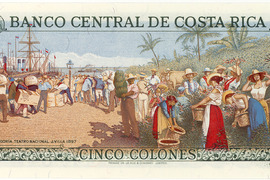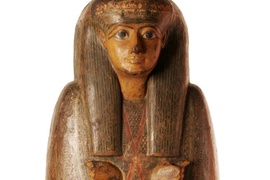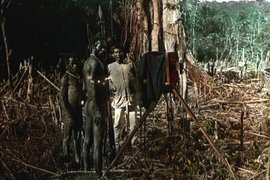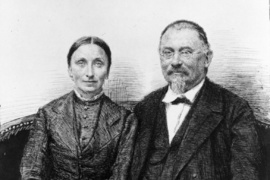Náprstek Museum
The Náprstek Museum of Asian, African and American Cultures is the only museum institution in the Czech Republic dedicated to the material and spiritual legacy of non-European civilizations.
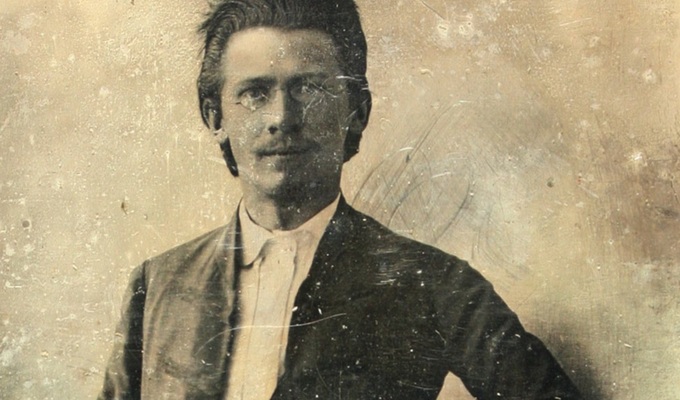
Collection of non-European ethnography
Collection of non-European numismatics
Collection of the Middle East and Africa in Antiquity
Photographic Collection of the Náprstek Museum
Náprstek Inventory collection
Collection of the Náprstek Museum Archives
Experts at the Náprstek Museum systematically process the entrusted collections. The results are continuously published in monographs or scholarly articles, including in the museum’s periodical Annals of the Náprstek Museum. Staff members regularly participate in international professional congresses and document the development of the cultures under study directly in the field. The scholarly activities are also planned within the framework of the Long-Term Concept for the Development of a Research Organization (DKRVO).
Archaeological Expedition to Wad Ben Naga
In 2009, the National Museum launched research at the archaeological site of Wad Ben Naga, located approximately 130 km northeast of Sudan’s capital, Khartoum. The subject of the research is an ancient settlement from the period of the so-called Meroitic Kingdom (circa 300 BC – AD 350), which reached its peak during the reign of King Natakamani and Queen Amanitore (1st century BC).
Egyptian Mummies
In 2009, the Náprstek Museum of Asian, African, and American Cultures initiated systematic research on ancient Egyptian mummies. The aim was to examine all ancient Egyptian mummified material in the public collections of the Czech Republic using modern radiological methods. The scientific team, composed of Egyptologists, anthropologists, and physicians, made fundamental discoveries that have been published in the Atlas of Egyptian Mummies in the Czech Collections series.
Deir el-Medina and Jaroslav Černý
Part of the sub-collection of the Prehistory and Ancient History of the Near East and Africa is an extensive assemblage originating from French research at Deir el-Medina, the village of royal craftsmen, or connected with the figure of Jaroslav Černý (1898–1970), who took part in the French researches at Deir el-Medina. The aim of the research is the comprehensive publication of these collections, including their interpretation. The research focuses primarily on the corpus of hieratic ostraca and objects from the so-called Eastern Cemetery at Deir el-Medina.
Material Culture of the Qing Dynasty (1644–1911)
The Náprstek Museum preserves more than one thousand garments, clothing accessories, pieces of jewellery, and objects of minor decorative art from the late Qing dynasty in China, as well as more than one thousand paintings, prints, and photographs documenting life during this period. The aim of the research is the professional and scholarly study of this collection.
Tibetan Buddhism in Mongolia
The collections of approximately three thousand objects of Tibetan Buddhism, including paintings, sculptures, and ritual items, were acquired not only in Tibet and China but primarily in Mongolia. The aim of the research is, in addition to evaluating the collecting activities of the original collectors, to provide a scholarly description and interpretation of the collection, with particular emphasis on religious paintings.
Metals from the Middle East, India, and Indonesia
Metal craftsmanship, including metalworking and metal casting, reached a high degree of perfection in both the quality of materials and the methods of their processing in the Middle East, India, and Indonesia. The collections of the Náprstek Museum comprise an extensive assemblage of utilitarian and decorative metal vessels, a wide variety of jewellery and ornaments for clothing and the head, and a diverse collection of weapons, particularly bladed ones. Scientific research and processing of these rich holdings focus on identifying the objects, evaluating them in the context of the collecting activities of their former owners, and placing them within the broader framework of world collections and the history of decorative arts of the respective regions.
Milan Stuchlík and the Mapuche
The Náprstek Museum holds an extensive collection of material culture of the Mapuche, an ethnic group inhabiting the central part of southern Chile and southwestern Argentina, acquired through the dedicated collecting activities of Milan Stuchlík. A scholarly monograph devoted to his life and the Mapuche collection is currently in preparation.
Milan Stuchlík was a distinguished Czech anthropologist, collector of art of the Chilean Indigenous Mapuche people, and professor of anthropology at the universities of Cambridge and Belfast, who died at the age of only 44 in Belfast, Northern Ireland. The monograph will be dedicated to the life and legacy of this Czech scholar, who lived in exile from 1968—first in Chile and later in the United Kingdom. Biographical details will draw from a unique estate provided by his wife, Jarka Stuchlíková, including diary entries and photographs from his research stays among the Mapuche. The book will also examine in detail the Náprstek Museum’s collection of Mapuche culture, which originates directly from Milan Stuchlík’s collecting activities. The collection includes ceramic vessels, cooking utensils and other traditional household equipment, sports items, baby carriers, masks, textiles, jewellery, and weapons.
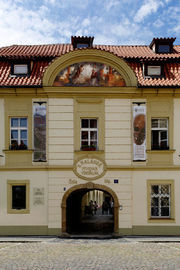
In 1826, the Old Prague house U Halánků, complete with a brewery and distillery, was purchased by the Fingerhut family. A few years later, their younger son, Vojtěch, would make it famous across the globe. In 1873, Vojta Náprstek founded the museum as the Czech Industrial Museum and became a well-known patron and promoter of new ideas and technologies. His passion for Oriental studies and his support for travellers such as Emil Holub, Josef Kořenský, Enrique Stanko Vráz, and others brought him numerous gifts that eventually transformed the museum’s focus from industry to ethnography.
After 1944, the museum was incorporated into the National Museum and its collections were reorganised to focus solely on non-European ethnic groups and their cultures. Even today, the museum has its patrons and donors who continue Náprstek’s legacy, enriching its collections. They not only help push the boundaries of knowledge but also preserve a place of exceptional encounters with an irreplaceable genius loci. The museum’s holdings are immensely rich, though only a small portion is on display.
In the Prague house U Halánků, visitors can also make use of a public library, which offers not only books and periodicals but also other collections, many of which were established by Vojta Náprstek himself. These include a collection of historical photographs, stereoscopic images, period graphics, and scrapbooks. There are also extensive archives of the Náprstek family, travellers, and Czechs living abroad.
The museum strives to gradually make all its collections publicly available and accessible. In addition to thematic exhibitions from its own holdings, it organises exclusive international exhibitions in cooperation with foreign institutions. The visitor offer is enriched with a variety of accompanying programmes, such as guided tours, lectures, creative workshops, and festivals where non-European cultures can be experienced with all the senses. The picturesque courtyard serves not only as a public space for visitors to relax but also as a venue for social events.




